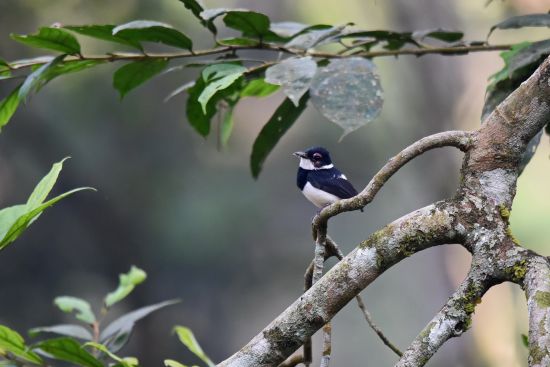- Platysteira castanea
Dyaphorophyia castanea
Identification
10–11cm
Male
- Glossy black upperparts
- White underparts and rump
- Black breast band
- Grey bare skin (eye wattle) around eye
- Dark brown iris
Female
- Dull brownish-black
- Grey head
- White belly and chin
- Chestnut chest and sides to head
Distribution
Africa: from southern Nigeria to South Sudan, Uganda, Kenya, northern Tanzania and northern Angola.
Taxonomy
This is a monotypic species.
It was formerly considered conspecific with West African Wattle-eye.
This species is placed in the genus Dyaphorophyia by some authorities[2].
Habitat
Swamps, damp savanna, moist lowland forests to 1,800m.
Behaviour
Diet
The diet includes insects.
Breeding
Monogamous. Its nest is small and cup-shaped; 1-2 glossy blue-green eggs are laid and incubated by the female for 17 days.
References
- Clements, J. F., T. S. Schulenberg, M. J. Iliff, B.L. Sullivan, C. L. Wood, and D. Roberson. 2013. The eBird/Clements checklist of birds of the world: Version 6.8., with updates to August 2013. Downloaded from http://www.birds.cornell.edu/clementschecklist/download/
- Birdforum thread with Wattle-eye phylogeny discussed in post 15
- Answers.com
- novelguide.com
Recommended Citation
- BirdForum Opus contributors. (2024) Chestnut Wattle-eye. In: BirdForum, the forum for wild birds and birding. Retrieved 9 November 2024 from https://www.birdforum.net/opus/Chestnut_Wattle-eye
External Links
GSearch checked for 2020 platform.1




